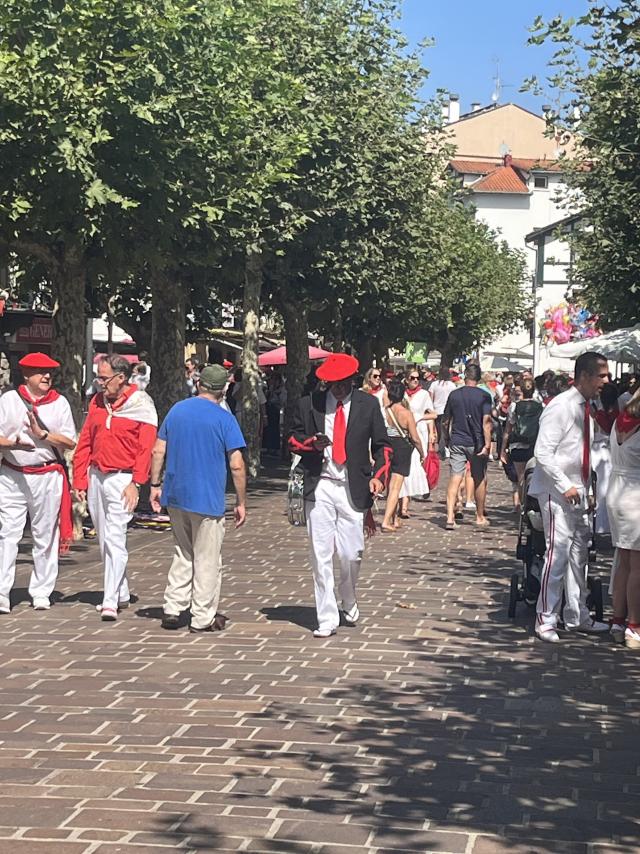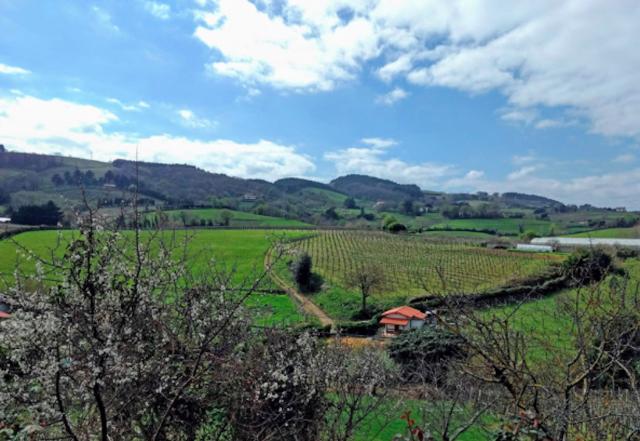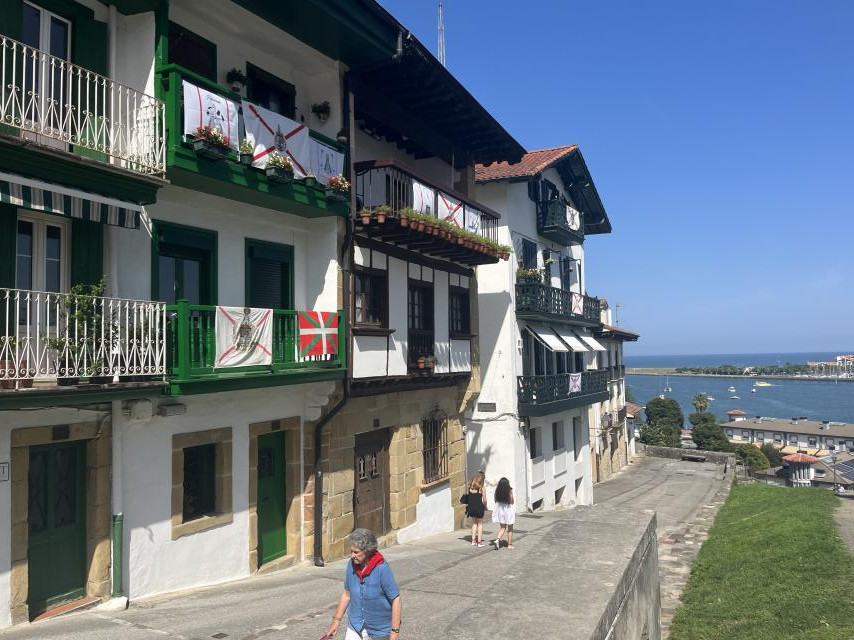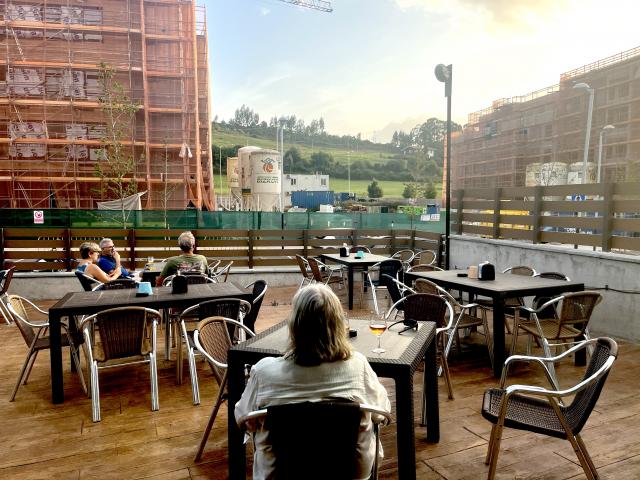The first time I saw Bilbao, the capital of Spain’s Basque country, was 50 years ago from the back seat of a customised and somewhat beaten up Bedford van with no air conditioning, meaning we had to travel with the windows open and were copping the full force of exhaust fumes belching from a truck in front as we slowly climbed a mountain road.
As I looked down at the filthy old industrial city at the bottom of the valley, half-covered in a pollution cloud, I remember thinking I’d died and gone to hell.
Among so many beautiful vistas I’d already seen on my first visit to Europe, this nightmare of what man hath wrought remains embedded in my memory. Strangely, however, I’ve come to love the Basque country on both sides of the border, the pais Vasco on one side, the pays Basque the other, with its coastline of superb bays and dramatic cliffs, its rolling green hills and craggy mountains, its food, wine, art, music, and most of all its sense of uninhibited fun, perhaps the result of sharing DNA types back in the mists of time with the Irish and the Welsh.
The Basques have been in this part of the world longer than anyone really knows, but possibly back 30,000 years, to what used to be known as the Cro-Magnon era. Having survived invasions by the Romans and the Visigoths and numerous other conflicts, the pais Vasco was enduring the dying days of the cruel fascist regime of Ferdinand Franco when I first rocked up in 1973, and after the despised Caudillo’s death, the Basque country became one of 17 autonomous communities outlined in the Spanish Constitution of 1978, with its own government, parliament, and judiciary.
And Bilbao, of course, has been rehabilitated to become one of the great cities of Europe.
Founded in 1300, the city became a major port for wool and other exports, making the city vibrant and wealthy. During the Industrial Revolution the surrounding hills became centres of mining and smelters soon lined the river Nervión. But by the end of the Franco era, the mines were depleted and the docks began to close, leaving Bilbao a polluted, grimy shadow of its former glory, which was what I saw in horror all those years ago.
The Basque Nationalist Party had a plan to revitalise the city and pursued the Guggenheim Museum which was looking for a European home. Opened in 1997, the building, designed by brilliant architect Frank Gehry, was initially loved and hated in equal measure, but it soon became the focal point of the new Bilbao – a centre of art and business. I first visited the titanium, stone and glass structure that sits strikingly on the banks of the river in 1998 and returned many times during a five-year stint working in St Jean de Luz, just across the border in France. The building beguiles from first sight, right up to Jeff Koon’s famous “Puppy” sculpture in front of the main entrance, completely carpeted with flowers, and the exhibitions within are often amazing.
But last week we gave the Guggenheim a miss, detouring around the coastal edge of the city to touristy Getxo and beyond to Bakio, where I elected to take a “short cut” to Bermio around the distinctive coastline where parts of Game of Thrones were filmed.
It was a decision I soon regretted as the road became a track barely a car’s width and dropping away to forested valleys on either side. I presume we were in forestry land or park since there were no driveways to turn into to retrace our route. We had to keep crawling along and pray no cars came the other way.
A car came the other way. The driver honked his horn for me to move closer to the ledge to let him past. I got out to take a look and discovered I had about six inches grace, but on his side you could trample the long grass down and drive over at least another foot of solid ground. We conferred in sign language, got back in our cars and crept past each other, our retracted rear-view mirrors brushing as we went.
If you could overlook the fear, it was a stunningly beautiful drive, but I’ve never been so glad to see Bermio, the pretty little port where we put into the harbor with Captain Bill on the Indies Trader all those years ago. And the cold beers on the terrace of the Hotel Puerto overlooking a pumping Mundaka never tasted so good.
FOOTNOTE: Like many other desirable tourist destinations, including Noosa, the Spanish Basque country has a problem with providing affordable housing for hospitality workers. Let’s hope that our state government’s SEQ plan doesn’t try to embrace the Spanish solution we found in the service town of Elexalde, just inland from at least half a dozen tourist traps and not far from Bilbao.
Staying at nearby Caserio Kamirune, we went looking for dinner and found the only open restaurant which boasted a courtyard that until recently had a gorgeous view of the Basque hills. Now it overlooks the construction of six blocks of six storeys of tiny apartments. Not pretty, but the food was good.










